A flower that blooms in winter, the hellebore really steals the show as it pokes through the snow. Discover two common varieties, “Christmas rose” and the “Lenton rose,” both winter-flowering perennials that return year after year!
Advertisement
About Hellebores
Hellebores bear glossy, evergreen leaves and rose-like flowers which bloom in winter or early spring. Though they are commonly called a “rose,” they are not in the rose family! Actually, they are more closely related to buttercups, since both belong to the Ranunculus family.
Aristocrats of woodland gardens in Europe, hellebores enjoy a shady or partial-shade location—at the entrance of your home, near your back porch, or under the shade of large shrubs or trees. Often coupled with ferns, the plants work well as a ground cover, too.
Importantly, hellebores are resistant to deer and voles!
A Tale of Two Pretties
This is a tale of two pretty hellebores:
- Christmas Rose: This white-flowered hellebore (Helleborus niger) blooms in December in warmer climates.
- Lenten Rose: This pinkish-purple hellebore (H. orientalis) generally blooms arounds Lent (late February into early March).
The Christmas Rose
The Christmas rose (Helleborus niger) will bloom from December through March. Snow may cover them up, but the flower buds and blooms will still be there when the snow melts! Their evergreen leaves look a little ratty after a long winter but they are soon replaced with fresh new ones.
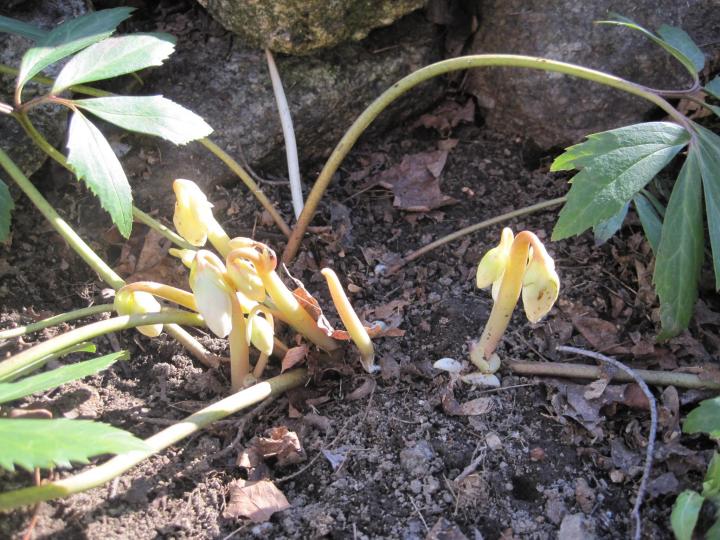 Tiny new buds emerge early in the spring as soon as they can break through the soil.
Tiny new buds emerge early in the spring as soon as they can break through the soil.
Their five-petaled, ivory-white blossoms are about 3 inches across and resemble large, single roses.
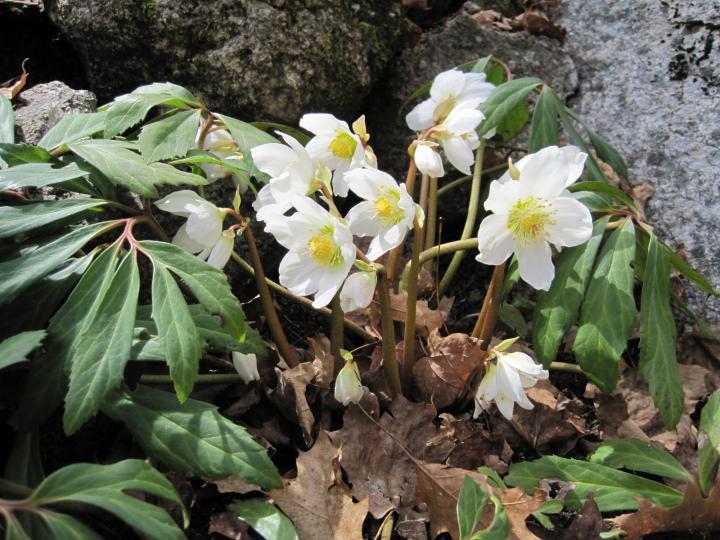
A well-established Christmas rose will stand about 12 to 15 inches tall and bear 20 stems of flowers. Some blossoms turn pink as they age but mine mature to a yellow shade.
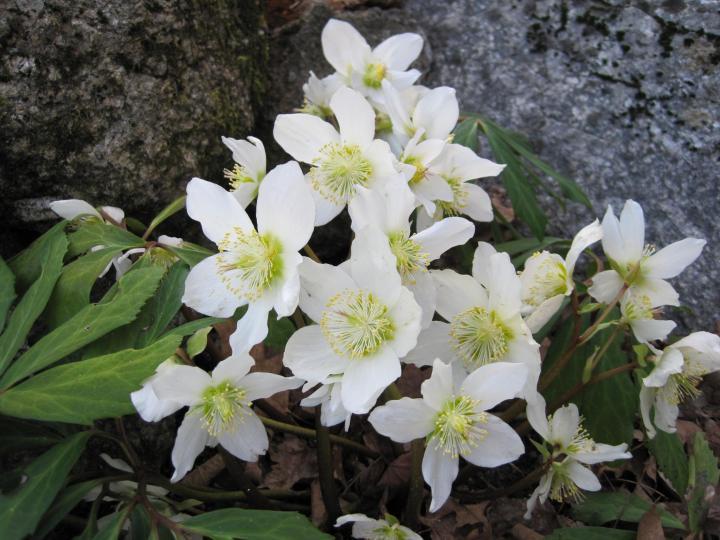
Their species name refers to the roots, which are black—and poisonous. In fact, the word hellebore in Greek means “food to kill,” so be cautious when working around them. Some experts recommend wearing gloves when cutting back the leaves, and be sure to keep any plant-munching pets or children away from them.
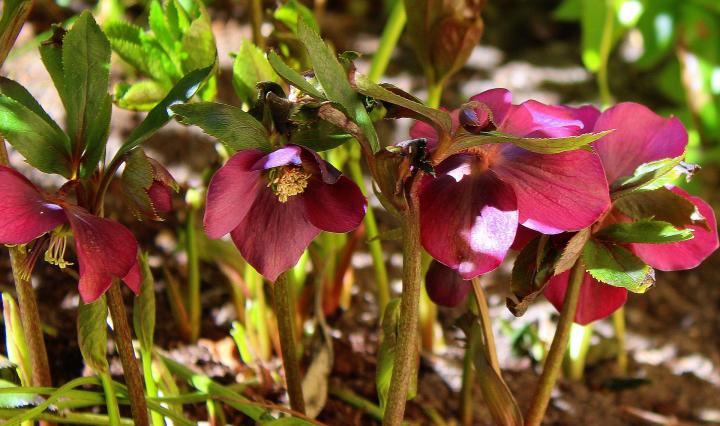
The Lenten Rose
The Lenten rose (Helleborus orientalis) blooms in April in my northern garden, so most years it technically does blossom during at least part of Lent. It is a little larger than the Christmas rose, standing about 24 inches tall and produces up to 30 stems, each topped with 2 or 3 nodding blossoms. The flowers are about 3 inches across but since it readily crosses with other species of hellebores, it comes in a wide array of interesting colors from white to pinks, maroon, lilac, and deep purple.
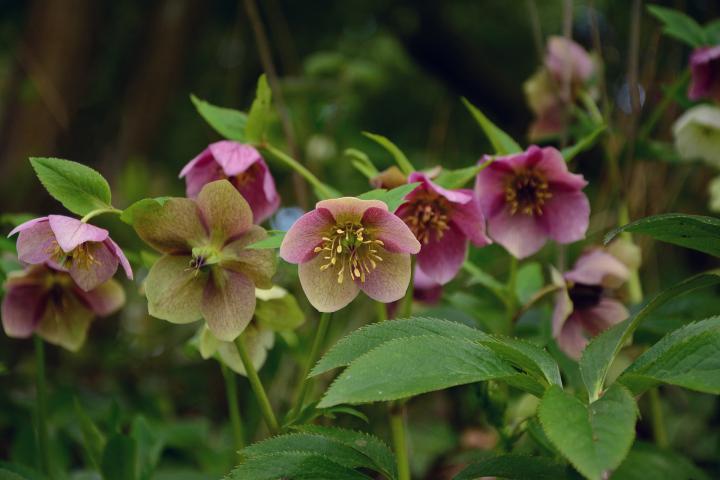
Many of the Lenten Rose’s blossoms have freckles, blushes of contrasting colors, or even stripes and there are single and double forms. Let your plant go to seed and in a few years you will be able to harvest the hybrid seedlings that come up underneath the plant’s protective leaves.
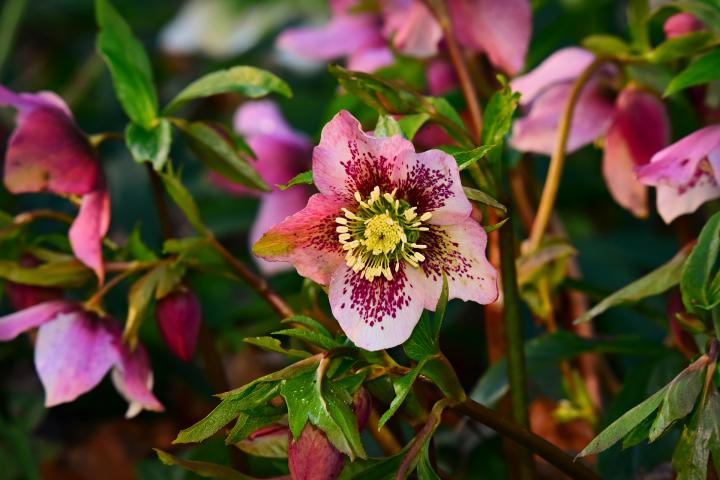
Caring for Hellebores
Hellebores like the same conditions as many other early bloomers—cool, dappled shade, and moist but well-drained, humus-y soil. Take care to amend the soil with plenty of organic matter, such as well-aged leaf mold and/or compost.
They look great as understory plants with rhododendrons and azaleas, planted along a woodland path, or in a shady mixed border.
→ See more plants and flowers that grow well in shade.
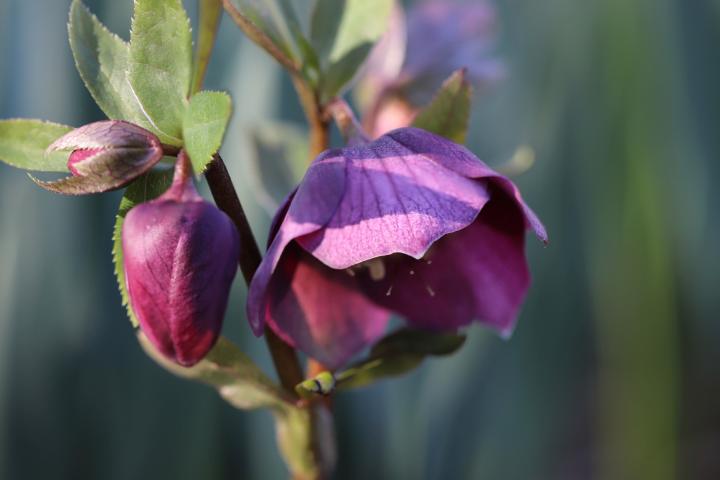
I grow mine near the back porch so that I can keep a close eye on the progress of these eagerly awaited blossoms. The flowers make up for their lack of fragrance by being long-lived, remaining on the plant into early summer.
Slow to become established, hellebores take a few years to settle in before they bloom, so you need to be patient. Like peonies, hellebores are long-lived and will eventually develop into large clumps with extensive root systems. Cold hardy to Zone 4, they are more susceptible to loss if grown in a hot, humid environment. They are not heavy feeders; a yearly application of well-rotted manure or compost early in the spring will keep them satisfied.
At a time of year when every blossom is precious, you’ll find that there is nothing boring about hellebores!
→ See more plants and flowers that bloom in winter and early spring!


 Tiny new buds emerge early in the spring as soon as they can break through the soil.
Tiny new buds emerge early in the spring as soon as they can break through the soil.













Comments